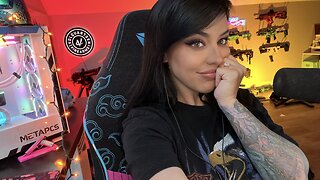Premium Only Content

Photobiomodulation Therapy: Red Light & Near-Infrared Applications
Photobiomodulation Therapy:
Red Light & Near-Infrared Applications
An Evidence-Based Overview -
What Is Photobiomodulation (PBM)?
Photobiomodulation uses low-level red and near-infrared light to stimulate healing, reduce inflammation, and enhance cellular energy. It’s non-invasive, non-thermal, and backed by growing
clinical research.
• Mechanism of Action: Light photons activate cytochrome c oxidase in mitochondria →
boosts ATP production → modulates oxidative stress and inflammation.
• Delivery: Via LED panels, handheld devices, or low-level lasers.
Dosage Matters: Strength, Distance & Duration
• Irradiance (Power Density): 5–200 mW/cm²
• Fluence (Energy Delivered):
o Superficial: 1–10 J/cm²
o Deep tissue: up to 60 J/cm²
• Proximity: Closer = better absorption. Direct contact or <1 cm distance is ideal.
• Session Duration: 5–20 minutes per area, depending on device and condition.
“Photon delivery is maximized when the light source is close to the skin, especially for deeper tissue targets.”
Safety & Cautions:
While generally safe, PBM requires thoughtful use:
• Photosensitivity: Avoid if using photosensitizing drugs (e.g., tetracyclines, isotretinoin).
• Cancer: Do not apply directly over active tumors unless under medical supervision.
• Eye Safety: Protect eyes—direct exposure can damage retinal tissue.
• Overuse: Too much light can inhibit healing (biphasic dose response).
• Device Quality: Use clinically tested devices with verified wavelength output.
Summary Takeaways:
• PBM is a promising therapy for inflammation, pain, skin health, and neurological recovery.
• Wavelength, dose, and proximity are critical for effectiveness.
• Always use eye protection and avoid overuse.
• Consult a healthcare provider before use—especially in oncology or neurological cases.
-
 6:45
6:45
The Power of Connection
2 days agoThe Power of Connection : Networking vs. Connecting
7.82K3 -
 28:53
28:53
Afshin Rattansi's Going Underground
3 days agoTrump Has Surrounded Himself With Neocons AGAIN, War After War is Coming! (James Carden)
16.9K18 -
 1:54:50
1:54:50
Badlands Media
11 hours agoDevolution Power Hour Ep. 398: Economic Warfare, Trump’s Strategy, and the Coming Reckoning
72.5K29 -
 2:08:19
2:08:19
Inverted World Live
9 hours agoInvasion of the Lectern Guy | Ep. 124
51.9K4 -
 2:54:29
2:54:29
TimcastIRL
8 hours agoDemocrats Declare STATE OF EMERGENCY Over ICE Raids, DHS ATTACKED, CIVIL WAR | Timcast IRL
250K146 -
 2:37:25
2:37:25
TheSaltyCracker
9 hours agoAlex Jones Gets Screwed ReeEEStream 10-15-25
109K266 -
 58:25
58:25
Man in America
13 hours agoPaper Silver IMPLODES: Experts Predict HUNDREDS PER OUNCE is Coming
47.6K25 -
 5:13:06
5:13:06
Drew Hernandez
16 hours agoSENIOR ISRAELI OFFICIALS CLAIM GAZA WAR NOT OVER & ILLEGAL ALIENS COORDINATE ANOTHER ATTACK ON ICE?
41.2K16 -
 5:34:51
5:34:51
SpartakusLIVE
8 hours agoLIVE from VACATION || #1 Greek God of a Streamer
44.6K3 -
 4:01:06
4:01:06
Alex Zedra
7 hours agoLIVE! New Devour Map
41.8K1